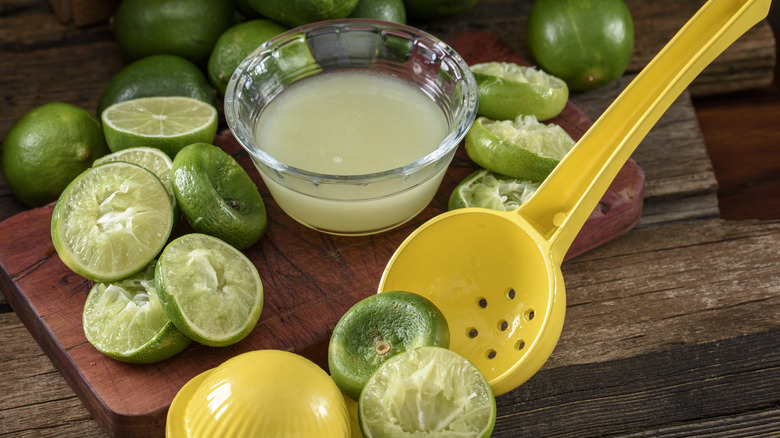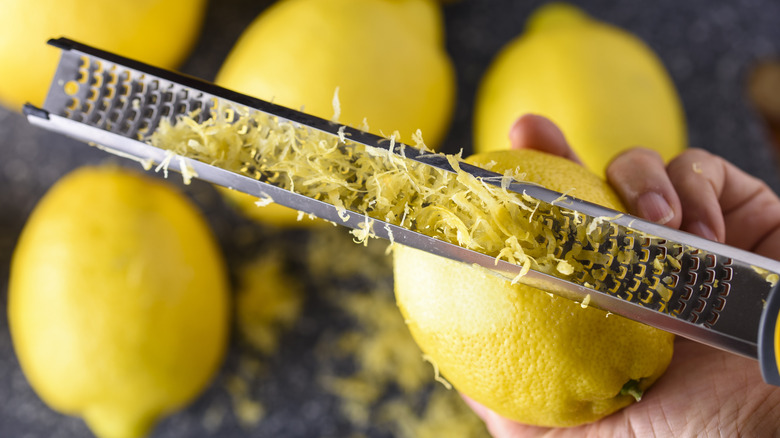It's Virtually Impossible To Zest An Already Juiced Lemon Or Lime
We've all done it — gotten excited about making a cocktail, or lemon curd, or some other recipe, sliced and juiced the citrus, then realized we need some zest, too. You can try to retroactively remove some of that colorful, perfumed peel from the squishy remains of your emptied citrus, but the results will be pretty pitiful. The shrunken fruit will be slippery, difficult to hold, and even more difficult to get leverage for the zester. It's a lot easier — and you're likely to get a lot more reward for your work — if you zest the citrus before juicing it. For this reason, whenever a recipe calls for any kind of citrus — be it lemon, lime, grapefruit, or one of these twelve citrus varieties – be sure to read the ingredient list and instructions the whole way through before continuing.
If you need both citrus zest and juice, you'll want to first wash, then zest, and then juice the citrus. The first step — running the citrus under clean water — is especially important if you are not buying organic citrus since it will help remove any pesticides that may have been applied to the fruit.
Wax on citrus: why it's there and how to get rid of it
Unless you are harvesting citrus from your own backyard or buying it from a local farmers market, there's a good chance your fruit has been coated in a layer of wax. This wax is made of oxidized polyethylene and is applied to a wide variety of fruits (including most citrus) to keep it from drying out after being harvested, and to make it look shinier and more appealing. While scientists have confirmed this wax is safe to consume, some people prefer to limit consumption. Unwaxed citrus tends to release more essential oils, which will make your foods and beverages more flavorful and aromatic when using fresh zest.
It is possible to remove wax from any citrus by placing the fruit in a colander, then placing it in a sink and running it under boiling hot water. Then scrub each piece of fruit with a brush (you can get a specific vegetable brush for this or use a designated clean toothbrush or nailbrush) and allow them to dry before zesting.
What to do when you have more zest than you need
There are so many ways to make the most out of citrus peels, and when you've gone through all the effort of properly preparing your citrus to be zested, you'll want to be sure to preserve it for the future. You can take advantage of an abundance of fresh citrus zest in one of two ways: dry it or freeze it.
First, consider if you want the citrus peel grated, which is ideal for baked goods, or cut into strips, which is useful for cocktails and candying. To dry or freeze citrus zest, sprinkle it in a thin layer across a baking sheet. If you live in a sunny, dry place, you can leave it out to dry naturally at room temperature over the course of a few days. Otherwise, you can dehydrate zest in the oven for about a half hour around 200 degrees Fahrenheit, or place it in the freezer for a few hours. After drying or freezing the zest, store it in an airtight container.



